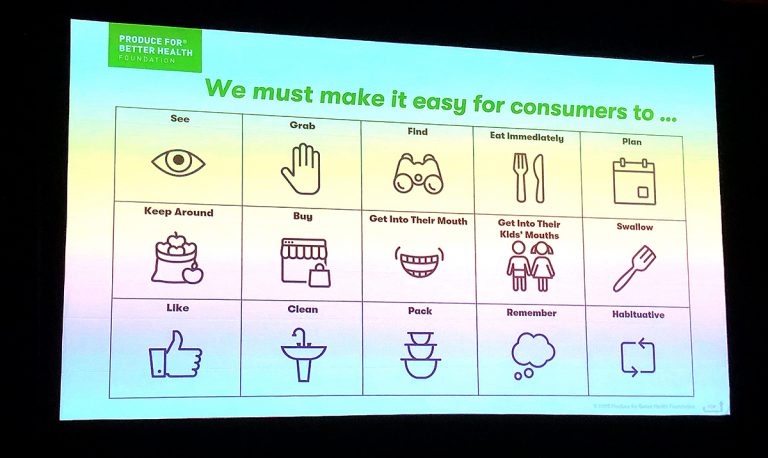American consumers are not in the habit of eating many fruits and vegetables.
That has to change.
“Most people don’t realize they’re acting on habit. They think they are making decisions. They’re not,” said Wendy Wood, provost professor of psychology and business at the University of Southern California, at the Produce for Better Health Foundation’s BB #:157162 annual Consumer Connection conference April 19.
“Habit memory resists change,” she said. “It’s a short cut.”
The produce industry has had many efforts to encourage consumption, from 5 a Day to More Matters to the current campaign, Have a Plant.
So far, they haven’t moved the needle much.
Wood said the 5 a Day campaign a generation ago had great success in awareness of eating five servings of fruits and vegetables a day, going from 9 percent consumer awareness in 1991 to 35 percent by 1995.
However, compliance with that number remained flat at 11 percent from 1991 to 2002. It’s about 10 percent now.
“It’s even lower now,” she said. “It didn’t work.”
What’s the best way to get consumers to repeat a behavior, or create a habit?
It has to be immediately enjoyable, and it has to be easy to do, Wood said.
Another panelist, Maeve Webster, president of consulting firm Menu Matters, said produce has to be available in all meal categories and occasions.
“It can’t just be salads and smoothies,” she said.
Additionally, the psychology has to be positive rather than negative, Wood said.
“Politically, incentives are easier than disincentives,” she said. “With habits, we think we have to convince people to change, but we can work on behavior, and then people will realize” that they are eating more fruits and vegetables, and they feel better.
As she said, habits are hard to start, but once they get going, they aren’t easy to break.



